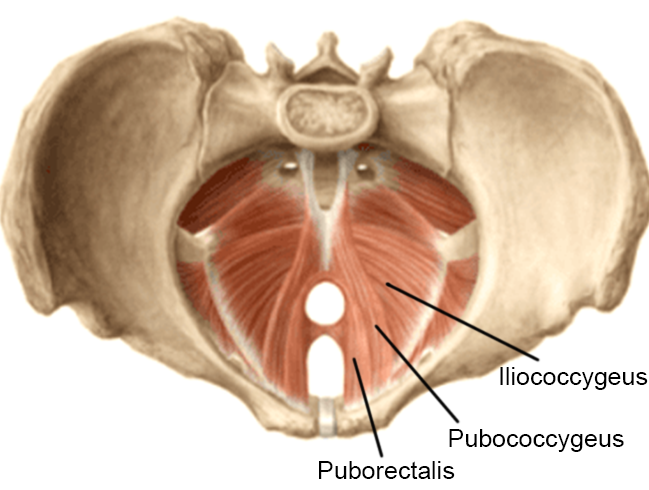Will kegel exercises help me last longer in bed? Yes, with these simple and effective exercises you'll be lasting longer and performing better in no time.

2,895 reviews


2,895 reviews

A lot of people think Kegel exercises are only for women, but they’re wrong.
Researchers have discovered that these pelvic floor muscle exercises can accomplish a lot for men. Some of the issues they can help with include:
Named after Dr. Arnold Kegel, a gynecologist who was successful in finding a non-surgical solution to problems stemming from weak pelvic floor muscles.
Yes, studies have shown that it can not only help with urinary incontinence but also with urine leakage as well.
To find the right muscles to do Kegel exercises properly you just need to locate the muscles you use to try to stop your urine stream or the muscles used when trying to prevent passing gas.
While everyone is different, many men have reported positive results doing Kegel exercises for their premature ejaculation.
Here's what to know about how to do kegel exercises for men to last longer in bed.

The short answer is yes—they most certainly can, if you're working the right muscle correctly and consistently.
Several scientific studies have found that Kegel exercises for men can be an excellent self-help solution for guys who want to last longer in bed.
For example, in one widely publicized study testing the effectiveness of Kegel exercises on premature ejaculation, 82.5% of the men who took part saw an increase in sexual stamina.

In another study that included a more extensive and diverse pool of test subjects, the overall success rate was a little lower; however, it still demonstrated the effectiveness of these pelvic floor muscle exercises.
Specifically, 54% of men saw improvement overall, but this number jumped to 65% for men aged 35 and younger.
Although research shows that Kegel exercises can help and really do work, it is important to note that this treatment requires time, practice, and patience.
The goal of Kegel exercises for men is to tighten their pelvic floor muscles. These are the muscles that surround and support the organs in your pelvis. When people refer to pelvic floor muscle exercises, they are talking about exercising several different pelvic muscles. These areas include the following:
Together, these three muscles are referred to as the Levator Ani and they create the bulk of the pelvic floor muscles. Check out the graph just below to see exactly what we are talking about.

The pelvic floor muscles extend across the bottom of the pelvis and combine with various ligaments and tendons. This combination forms a hammock-like structure that supports the bladder and bowels. Fortunately, it is easy to identify the sensation of flexing your pelvic floor muscles.
Try identifying them the next time you need to urinate. Because your pelvic floor muscles support your bladder, they are the muscles you use to stop peeing midstream.
When you try to stop the stream, the area where you feel the strain is where your pelvic floor muscles are located. Start and stop peeing a few times to get comfortable with how to contract the right muscles.
If you do this a few times, you may find that your pelvic floor muscles are a little sore. Congratulations! You just performed your first Kegel-style exercise.
Another way to find the correct pelvic muscles is to imagine that you’re trying to hold in some gas.
By squeezing the anal sphincter (not your butt cheeks), you’re also working the pelvic floor muscles.
At this point, you are ready to learn how to use Kegel exercises to assist with premature ejaculation.

Now that you know what the pelvic floor muscles are, where they are located, and the purpose they serve, you are ready to start getting them into shape.
If you tried the exercises above, then you may already know that you are probably in for a few sore muscles in the beginning. Just like any other exercise program, take it easy to start.
As you build up the pelvic floor muscles, you will be able to handle more repetitions.
However, you should talk to your doctor before you begin to ensure that Kegel exercises are right for you and your body.
Also, if you feel pain at any point when doing these exercises, stop and seek medical advice.
There are two different types of Kegel exercises for men: slow Kegels and fast Kegels.
To do both types of Kegel exercises, wear loose-fitting clothing.
You can sit, stand, or lay down depending on your preferences and comfort level.
Once you gain a little experience with them, you can perform them pretty much any time, any place.

Many guys find that doing ten fast Kegel exercises followed by ten slow Kegels is the right amount for one session.
Try to do three sessions of pelvic floor muscle exercises each day or at least a few times per week.
Some guys may find that they don’t need to do them as often to experience the benefits—figure out what’s right for your body.
For convenience and to make them a habit, try doing your pelvic floor muscle exercises in the morning, before bed, and one other time during the day (such as over your lunch break).
The more you do your Kegel exercises in the beginning, the faster you will see results.
Kegel exercises for men can help with a variety of male sexual health issues.
The sexual benefits of pelvic floor muscle exercises include lasting longer in bed, harder and firmer erections, the ability to have an orgasm without ejaculating (useful for guys who want to learn how to have multiple orgasms), and more intense orgasms.
In addition to treating PE, research has also found that Kegel exercises can help men with erectile dysfunction as well.
Even if you technically don't meet the clinical criteria for PE, pelvic floor muscle exercises can still be helpful for improving your sexual stamina.
Research finds that the average healthy man lasts around 5.5 minutes during vaginal penetration.
However, you can extend this length of time by working on your pelvic floor muscles.
The average healthy woman can take up to about 15 minutes to reach climax.
The fact that women tend to take longer to reach orgasm than men is something that contributes to what has been dubbed the “Orgasm Gap”.
For more information about the “Orgasm Gap”, read: The Orgasm Gap: FAQs & Ways to Close it
Soft erections can be caused by both reduced blood flow to the penis as well as weak pelvic floor muscles.
Like any form of exercise, pelvic floor muscle exercises can help to improve blood flow and circulation to the area being exercised.
Stronger pelvic floor muscles can, therefore, help your penis to engorge more fully during erection, thereby making it feel harder and look bigger.
It’s well known that many women seem to be capable of having multiple orgasms.
However, what many don’t realize is that men can potentially have multiple orgasms, too.
For example, a 2016 study found that between 7 and 10 percent of men report having had more than one orgasm.
One of the most common ways men have been able to achieve this sexual feat is through practicing reaching orgasms without ejaculating.
In order to do this, however, you generally need to build strong pelvic floor muscles.
The pelvic floor muscles you exercise through Kegels are the same ones that contract when you are having an orgasm.
The stronger these muscles become, the more intense the feelings of pleasure will be when you reach climax.
This is yet another reason to practice your Kegel exercises regularly.
Of course, Kegel exercises are not the only way to help with premature ejaculation.
Other methods include using thicker condoms (to reduce penile sensitivity), desensitizing sprays like Promescent, and other self-help exercises, such as the stop-start method and the squeeze technique.
Comparing Kegels to alternative treatments such as desensitizing sprays, it is important to realize that Kegel exercises for men won't get you instant results, whereas a desensitizing spray works immediately.
To see the results from Kegel exercises, you need to put in the work.
For this reason, combining Kegels with other treatment approaches (like desensitizing sprays) may be a great option.
This will allow you to experience some stamina benefits right away, while also unlocking all of the additional benefits of Kegel exercises, like more intense orgasms and firmer erections.
The start-stop method, sometimes known as "edging", is another popular alternative to controlling premature ejaculation.
You can practice the start-stop method on your own or with a partner, but many men find using this method to be more effective with a partner.
Here is a brief outline of the method.
While the start-stop method helps many men, some guys who use it find the method unfulfilling sexually for both themselves and their partners.
Using Kegels to control ejaculation is not quite as disruptive.
In addition, this treatment method lacks the additional benefits of Kegels.
The squeeze technique works by manually stopping ejaculate from exiting the penis.
Again, you can practice this technique alone or with a partner. Here’s how it works:
Compared to Kegel exercises, the squeeze technique can be disruptive to sex because you need to keep stopping and starting over and over.
Also, some men may find this approach to be a little painful and it doesn’t offer the additional benefits of Kegels.

One of the best things about Kegel exercises is the number of problems they can help address.
Besides helping men last longer in bed, it can also help with erectile dysfunction.
Pelvic floor muscle exercises can even address several non-sexual health issues:
This is a topic that no one likes to bring up, but as we age, some of us experience urinary and/or anal leakage.
Kegel exercises can help tighten your pelvic floor muscles, which can help prevent and resolve these problems.
Practicing Kegel exercises can also help reduce an urgent need to empty the bladder, something that keeps many older men up at night...
As men age, many find themselves with enlarged prostates, which can produce several negative symptoms, such as:
Research suggests that regular Kegel exercises can help to reduce some of these symptoms.
Unfortunately, Kegel exercises don’t work for everyone.
Across studies, there is a minority who don’t seem to experience the benefits; however, in many cases, this may be because they aren’t performing the Kegel exercises correctly or are not targeting the right muscles.
Also, for those with pelvic floor muscle disorders, Kegel exercises could be counterproductive.
This is why it’s important to consult with a doctor first to ensure you’re healthy enough for pelvic floor muscle exercises.
And, again, if you experience pain when doing these exercises or if you have negative symptoms that develop or worsen while doing Kegel exercises, seek prompt medical advice.
With so many benefits of pelvic floor muscle exercises and so few drawbacks for most people, Kegel exercises can be a great addition to almost any man’s sexual health routine.
They don’t cost you anything, you don't need any special equipment, and once you become an expert in Kegel exercises, you can do them any time, whether you’re lying in bed, watching TV, or even working.
Do yourself a favor and strengthen your pelvic floor muscles by doing your Kegel exercises.
In a short period of time, you just might find yourself with a better sex life.
Dr. Justin Lehmiller is a social psychologist and Research Fellow at The Kinsey Institute. He is author of the blog Sex and Psychology and the popular book Tell Me What You Want: The Science of Sexual Desire and How It Can Help You Improve Your Sex Life. He is also a prolific researcher who has published more than 50 academic works, including a textbook titled The Psychology of Human Sexuality that is used in college classrooms around the world. Dr. Lehmiller is one of the media's go-to experts on sex and has been interviewed by The Wall Street Journal, The New York Times, and CNN; he has also appeared on dozens of radio, podcast, and television programs.
Absorption Pharmaceuticals LLC (Promescent) has strict informational citing guidelines and relies on peer-reviewed studies, academic or research institutions, medical associations, and medical experts. We attempt to use primary sources and refrain from using tertiary references and only citing trustworthy sources. Each article is reviewed, written, and updated by Medical Professionals or authoritative Experts in a specific, related field of practice. You can find out more about how we ensure our content is accurate and current by reading our editorial policy.
Wikipedia Contributors. Last Edited 2021 January 05. Arnold Kegel. Wikipedia. https://en.wikipedia.org/wiki/Arnold_Kegel. Accessed 29 Jan 2022.
Justin Lehmiller. 2017 October 18. Why Kegel Exercises Are Good For Both Women And Men. Sex & Psychology. https://www.sexandpsychology.com/blog/2017/10/18/why-kegel-exercises-are-good-for-both-women-and-men/. Accessed 29 Jan 2022.
Antonio L. Pastore, Giovanni Palleschi, Andrea Fuschi, Cristina Maggioni, Rocco Rago, Alessandro Zucchi, Elisabetta Costantini, and Antonio Carbone. 2014 June. Pelvic floor muscle rehabilitation for patients with lifelong premature ejaculation: a novel therapeutic approach. NCBI. https://www.ncbi.nlm.nih.gov/pmc/articles/PMC4003840/. Accessed 29 Jan 2022.
Wikipedia Contributors. Last Edited 20221 October 22. Levator ani. Wikipedia. https://en.wikipedia.org/wiki/Levator_ani#:~:targetText=The%20pubococcygeus%20muscle%20or%20PC,and%20supporting%20the%20pelvic%20organs. Accessed 29 Jan 2022.
Nezihe Kizilkaya Beji, Onay Yalcin, Habibe Ayyildiz Erkan. 2003 October. The effect of pelvic floor training on sexual function of treated patients. PubMed. https://pubmed.ncbi.nlm.nih.gov/14530833/. Accessed 29 Jan 2022.
Marcel D Waldinger, Paul Quinn, Maria Dilleen, Rajiv Mundayat, Dave H Schweitzer, Mitradev Boolell. 2005 July. A multinational population survey of intravaginal ejaculation latency time. PubMed. https://pubmed.ncbi.nlm.nih.gov/16422843/. Accessed 29 Jan 2022.
Erik Wibowo, Richard J Wassersug. 2016 April. Multiple Orgasms in Men-What We Know So Far. PubMed. https://pubmed.ncbi.nlm.nih.gov/27872023/. Accessed 29 Jan 2022.

2,895 reviews
Your Cart Is Empty

$19.95

$14.95

$19.95